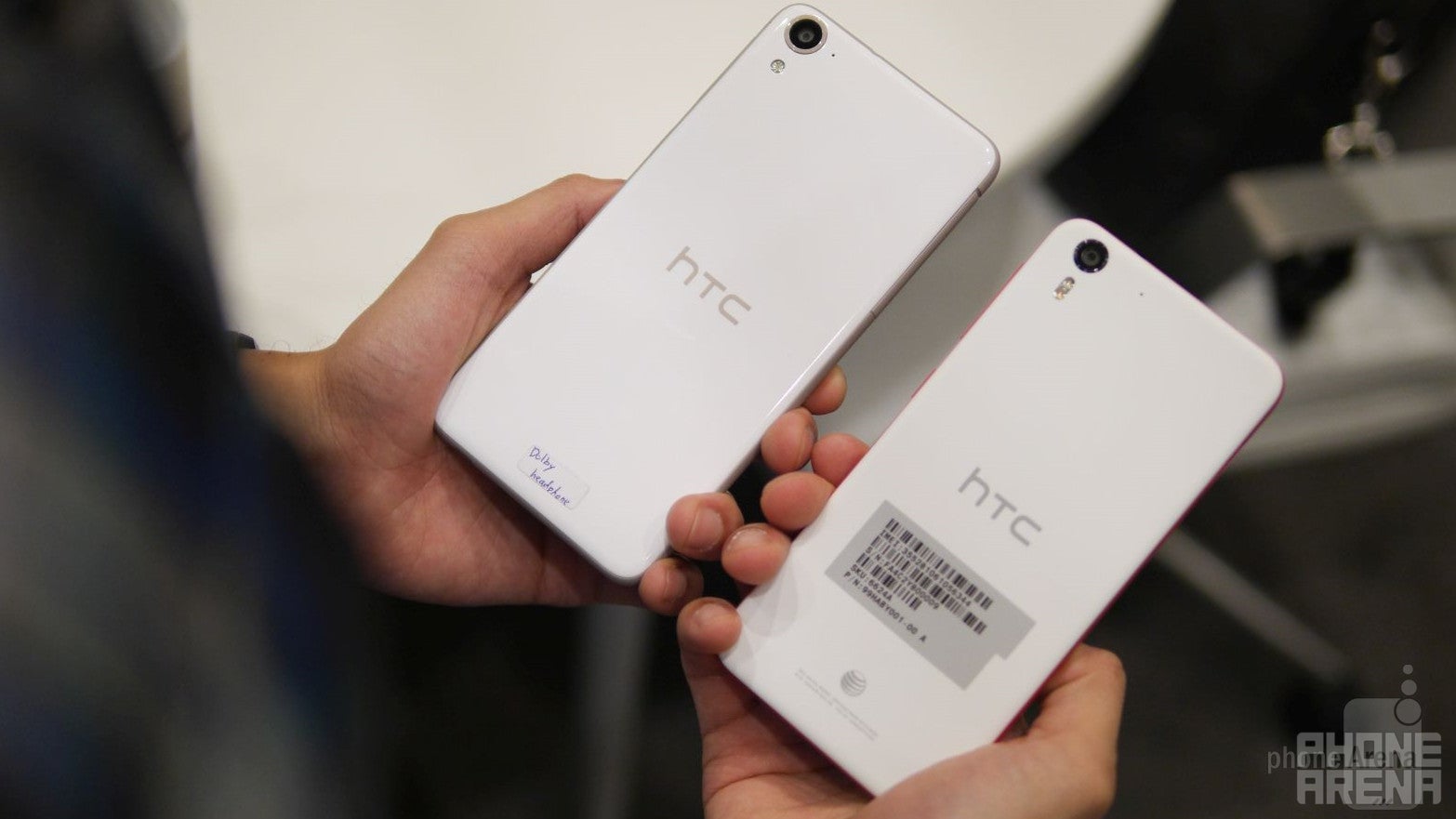HTC Desire 826 vs HTC Desire EYE: first look

HTC did what it should have a long time ago, and moved its 4 MP UltraPixel snapper at the front, placing a more orthodox 13 MP camera at the rear of the newly-announced Desire 826. We just took it for a spin, comparing it with HTC's original idea for a selfie-oriented handset, the Desire Eye, and found quite a few differences.
Design
The phones sport a largely similar design concept, with matte plastic unibodies that are very comfortable to hold, and rounded corners with a colored separation rim around the sides. The Desire 826 is, naturally, the larger, harder to handle phone, due to the increased screen diagonal, but the difference is not that crummy, since both are pretty big phones anyway, thanks to the embedded BoomSound stereo speakers at the front, requiring that you work them with both hands pretty often. The Desire 826 is notably heavier than the Eye, though.
Display
With a 5.5" 1080p display, the Desire 826 returns a slightly lower pixel density than the 5.2" 1080p panel of the Desire Eye, but still, both are at 400ppi+, which makes this advantage moot. The displays are bright, with wide viewing angles and pleasing colors, but we can't vouch for the 826's outdoor visibility, as only only had the chance to peruse it on the show floor at CES.
Processor and memory
Both phones are powered by Snapdragon silicon, but while the Desire Eye opts for the more powerful 801 version, the Desire 826 aims to futureproof itself with the 64-bit octa-core Snapdragon 615, which, frankly, is the better choice here - it makes the phone cheaper to craft, and corresponds with Android 5.0's native 64-bit kernel. Both sport 2 GB of RAM and 16 GB of storage, with a microSD card for expansion.
Interface
The latest HTC Sense UI is what you will find on the two Desires, but the Desire 826 will ship with Android 5.0 Lollipop out of the box, while the Eye is waiting on its Lollipop update still. The imagery runs smooth, and features all bells and whistles you've come to expect from HTC's overlay, plus extra features in the camera app targeted at the improved selfie snappers at the front.
Camera
With a 13 MP rear and 13 MP front cameras, the Eye might seem like the better choice for selfie aficionados, but our own front camera test showed that it is actually a middle-of-the-road performer in that respect, save for the resolved detail. The Desire 826 has a 13 MP camera on the back, and a 4 MP UltraPixel shooter at the front and center, which might arguably be a better performer, on account of its larger pixel size and improved low-light performance.
Battery
With a slightly larger, 2600 mAh juicer, compared to the 2400 mAh piece in the Desire Eye, the 826 could deliver longer battery life, given its screen resolution and more frugal chipset. HTC has proven that it can eke out more bang out of a given battery capacity than most, so we wouldn't worry about the battery performance before we've run our own benchmark on the Desire 826.
Expectations
To cut a long story short, we found the Desire 826 to actually be an improved version of the Desire Eye - it has a larger display, and yet is not that much more difficult to handle, a larger battery, and a futureproof 64-bit chipset. Granted, the front camera is of lower resolution than the one on the selfie-oriented Eye, but in real world scenarios it might actually perform better, due to the UltraPixel tech involved. Above all, the Desire 826 is shaping up to be cheaper than the flagship-priced Desire Eye, although HTC is staying mum on the exact pricing still.














Things that are NOT allowed: